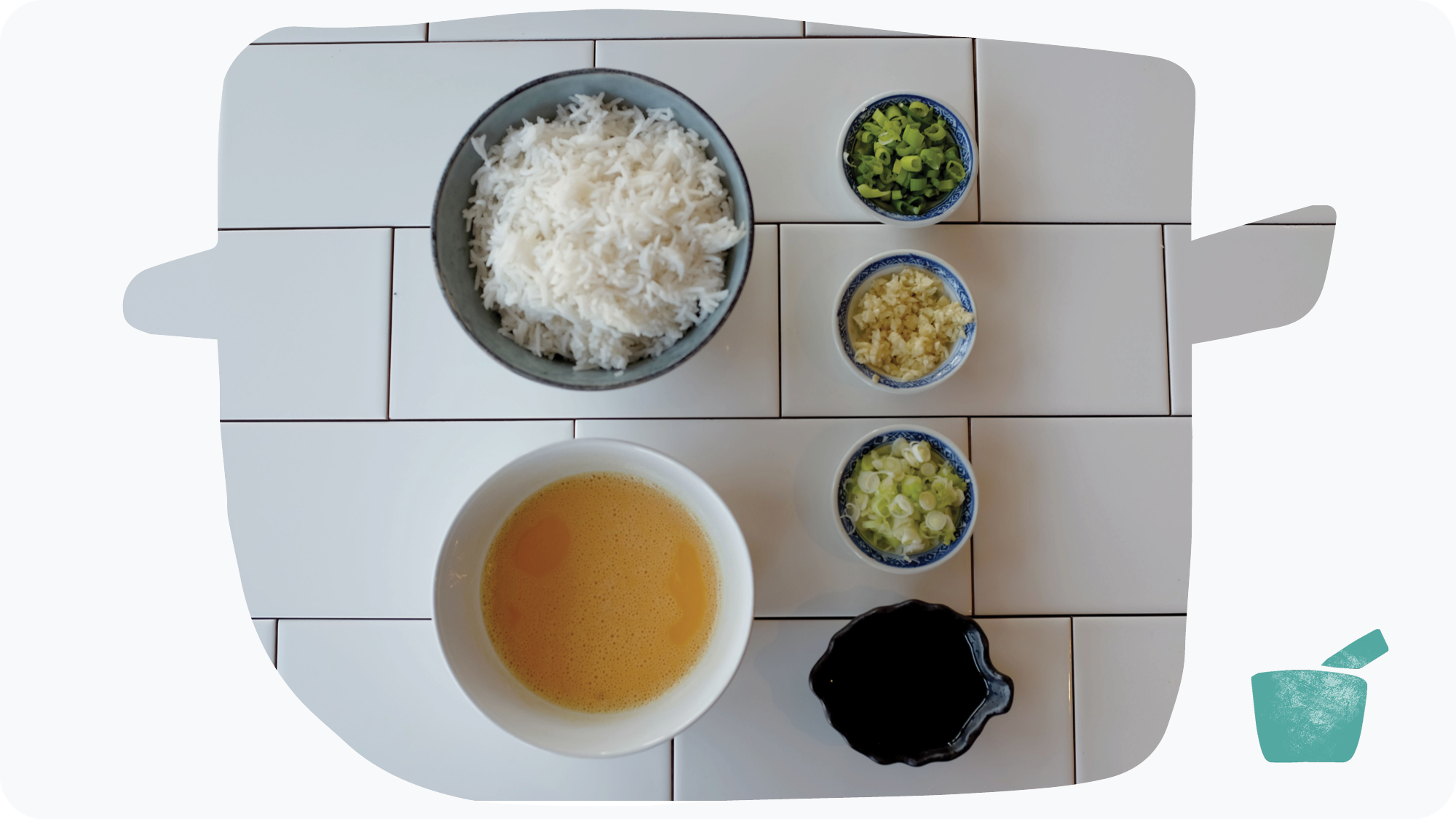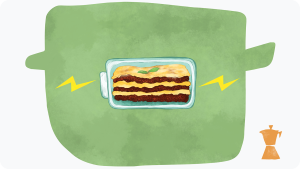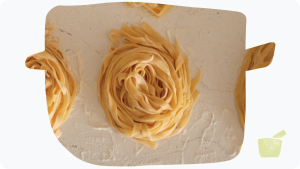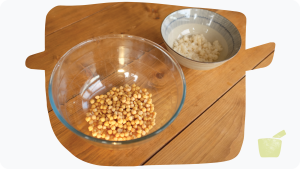Amazing fried rice has only 2 essential components: the rice, and the fry. It’s as simple as that… until it isn’t.
1. The rice
Let’s start with the rice. All you need is cooked rice, with the grains being plump and slightly dry. They need to be plump because that means they’re properly cooked – they’ll have the right texture when you eat them. (If you’ve ever eaten normally cooked rice, that’s all I’m asking for.) You can use any type of rice: short grain, long grain, white, brown, black – as long as the result is plump and dry we can proceed.
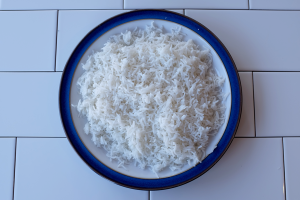
The rice needs to be dry so that when you fry it, it doesn’t release lots of moisture. Any water left on the surface of the grains will evaporate when you fry it, overcooking the rice and making it soggy. These are the two cardinal enemies of fried rice. If the rice overcooks, then the frying process will turn it into a mash, and if it’s soggy then it clumps and forms balls of mush rather than properly frying.
There are many ways to dry your rice – cooking it the day before and leaving it in the fridge is the easiest, but laying out the rice on a plate to cool and dry it or steaming it are options if you want fried rice the same day. Slightly undercooking your rice can also help; this can be achieved by putting a touch less water in when you boil it, or by pulling it early if you use a colander. You only want to slightly undercook it – remember it still needs to be plump!
2. The fry
This is where things can start to get more complicated. There is so much you can do with fried rice, starting with just frying it up with only oil. You can add other ingredients, spices, sauces. The world is your oyster – heck you can even add oysters if you fancy.
Speed
The process for frying rice needs to be fast. If you leave the rice too long in the pan, it will either overcook or burn. This speed is achieved with high heat, which allows the rice to fry quickly and evenly. To assist this, you also need to agitate the rice as it fries, tossing and stirring it to allow the oil to coat and flavour each grain. This also helps you with the high heat – by moving and tossing it you prevent it burning.
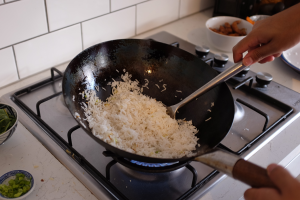
While a wok is well adapted for this, it’s by no means essential; making great fried rice in a nonstick frying pan or cast iron pan is easily possible. What is crucial is not overcrowding the pan – if you add too much to the pan it cools down quickly, is difficult to agitate properly, and cooks slowly.
Preparation
The next key to great fried rice is being prepared. Because the frying is fast, everything needs to be ready to go when needed – prepared, portioned, and easily accessible. You also need to plan when you add different ingredients based on how you want them to cook. Adding aromatics (like spring onions, garlic and chilli) early means that they will perfume the oil and flavour the rice, while adding them later retains their freshness and their bite.
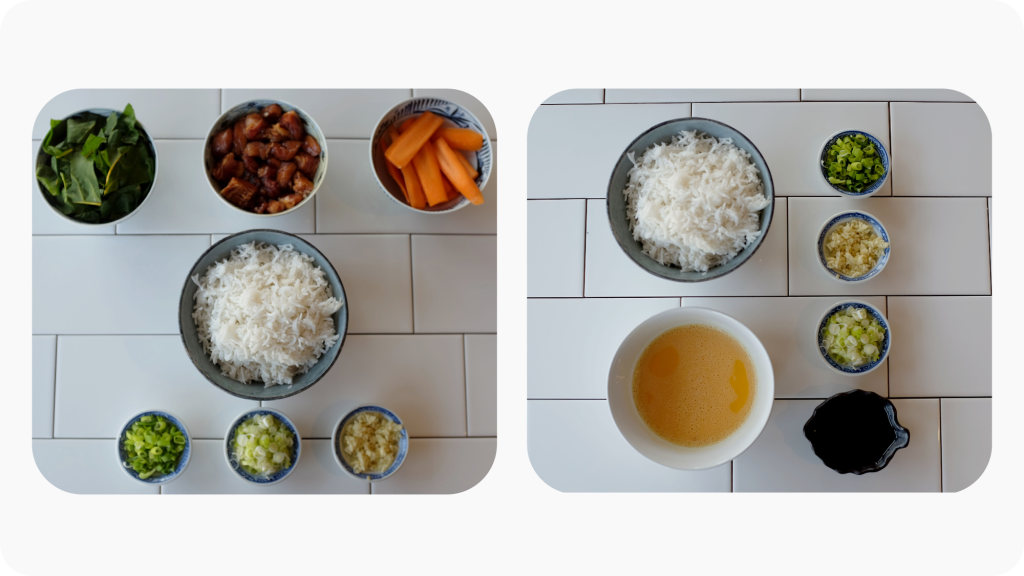
There isn’t a correct way to do it – but you need to know what you want when you start so that things can come together smoothly. The last thing you want is rice steaming in the pan while you frantically beat an egg, or garlic turning to charcoal as you rush to get rice out of the fridge.
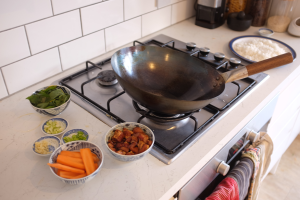
Sundries
A fast and hot fry also influences how you need to cook any other ingredients that you add. Delicate aromatics and spices can very quickly burn, while more hearty ingredients ( meat or larger vegetables) may only cook on the outside and remain raw in the middle. The most important factor to consider is that the time it takes to cook the rice is paramount. The rice is the driving factor behind your decisions, and all other ingredients work on its clock.
If you’re adding meat or heartier vegetables, then par-cook them first: using the same pan for the rice, cook them through until almost done, then take them out and set aside. By cooking them beforehand you can cook them through before they go into the rice, and drive off any moisture in them that would make the rice soggy. By taking them out and putting them aside you stop them overcooking and becoming hard or mushy.
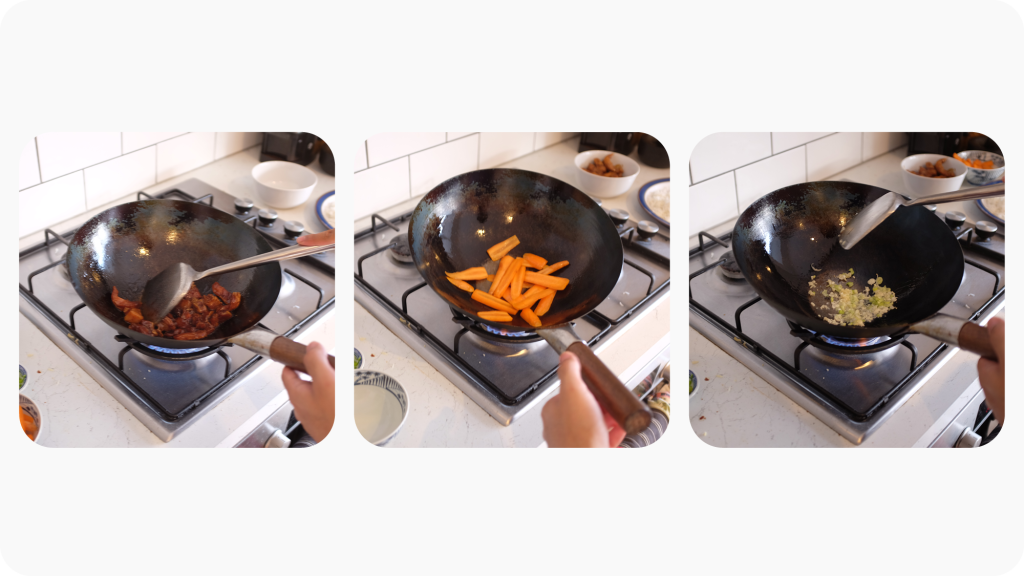
The opposite is true of fast cooking vegetables: throw them towards the end of cooking the rice, so they finish at the same time as the rice. If you add them too early, the veggies become limp and give off all their water – again both things to avoid.
For aromatics and spices, if added to the hot pan at the start they will cook very quickly. To stop them burning, add the rice almost immediately after and mix through – the aromatics perfume the oil perfectly this way without burning. If you add them towards the end of cooking, move the rice to the side of the pan and cook the aromatics in the space created – this will release their flavours before you mix them back in.
Sauces and seasoning
The last thing added to any fried rice is a sauce (if using one at all) and seasoning. These need to cook quickly, and mix through evenly. Any sauce that you add needs to be liquid enough to mix through evenly, but not so thin that it will add the dreaded sogginess to the rice at the final stage. Add a splash of water to something thick like gochujang to make it easily mixable, but always be careful.
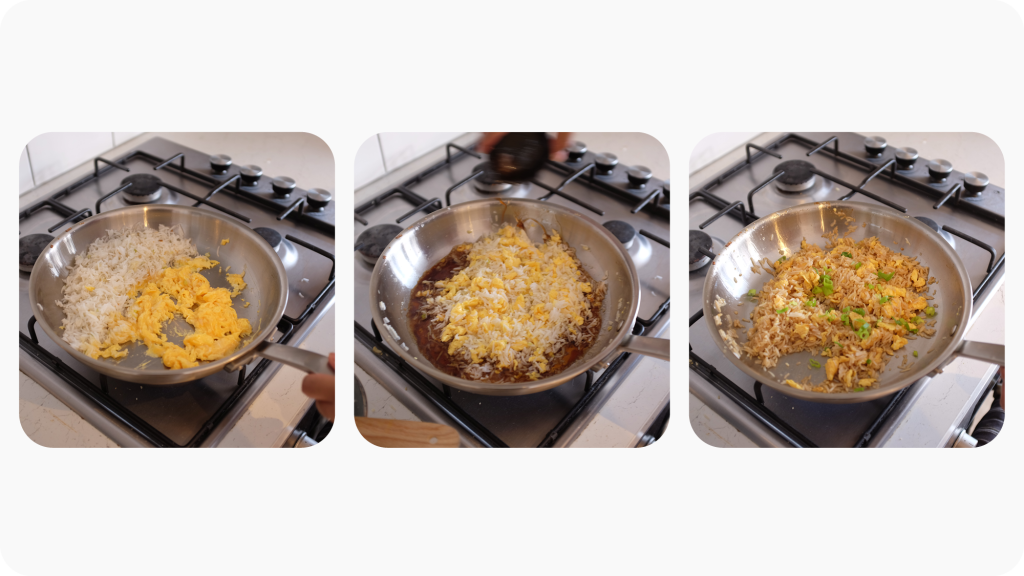
It is also crucial to cook the sauce as you add it to the rice, this drives off the moisture, develops the flavours of the sauce, and makes it coat the rice far better. Adding the sauce slowly round the sides of the pan is the best way to do this, mixing it in as you add more. You should hear a sizzle as you add it to the pan. Most sauces that you add will already have some saltines and sweetness to them, so always taste before adding final seasoning.
The final result
You should now have in front of you a delicious plate of fried rice. The grains should be individually identifiable, all perfectly coated with whatever you have fried them with. The other ingredients you added should look perfect – bright and juicy, but still crisp. And it should smell amazing. All that’s left is to tuck in.
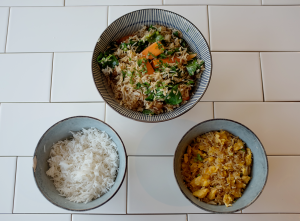
A note on ‘wok hei’
It’s often claimed that the ‘breath of the wok’ is what makes an amazing fried rice. The process of tossing the ingredients through the powerful flame of a professional wok burner chars them and creates the billows of flame you might associate with stir fry in professional kitchens.
This taste is interesting, but not an important factor in fried rice – rice was fried for centuries without wok stoves or ‘wok hei’. If you really crave the flavour, using a small kitchen blowtorch as you toss the rice creates a similar flavour. Personally? I don’t bother.
